
What if I told you that one age group is more depressed, more anxious, and lonelier than any other in America?
You might assume I’m talking about teens. Mood disorders, self-harm, and suicide have become more common among adolescents in recent years; article after article reports that social media is toxic for teen girls especially, eroding their self-esteem and leaving them disconnected. Or you might think of older adults, often depicted in popular culture and news commentary as isolated and unhappy, their health declining and their friends dropping away.
So perhaps you’d be surprised to hear the results of a Harvard Graduate School of Education survey on mental health in America: Young adults are the ones most in crisis. Even Richard Weissbourd, who led the study in 2022, was taken aback. His team found that 36 percent of participants ages 18 to 25 reported experiencing anxiety and 29 percent reported experiencing depression—about double the proportion of 14-to-17-year-olds on each measure. More than half of young adults were worried about money, felt that the pressure to achieve hurt their mental health, and believed that their lives lacked meaning or purpose. Teenagers and senior citizens are actually the two populations with the lowest levels of anxiety and depression, Weissbourd’s research has found.
Other studies of young adults have similarly alarming findings. According to the CDC, in 2020, depression was most prevalent among 18-to-24-year-olds (and least prevalent among those 65 or older). A 2023 Gallup poll found that loneliness peaked at ages 18 to 29. And, according to one meta-analysis spanning four decades, more and more young adults reported loneliness each year. When Weissbourd repeated his survey last year, young-adult anxiety and depression had also risen, to 54 and 42 percent, respectively. Still, the struggles of young adults have gone widely unnoticed. When Weissbourd got his data, “it was really upsetting,” he told me. “What is going on here? And why aren’t we talking about it more?
The phase between adolescence and adulthood has long been daunting: You’re expected to figure out who you are, to create a life for yourself. That might sound exciting, as if all the doors are wide open, but much of the time it’s stressful—and modern challenges are making it harder. Young adults are more vulnerable than ever, but much of American society doesn’t see them that way.
One thing that gets Jennifer Tanner fired up is the myth that young adulthood is a carefree time. Many people see it as a perfect juncture, when you’re old enough to have agency but young enough to be free of big responsibilities. Commonly, though, it’s the inverse: You have new obligations but not the wisdom, support, or funds to handle them. Tanner is a developmental researcher studying “emerging adulthood,” typically defined as the years from age 18 to 29, and she thinks that many more established adults wish they could go back to that period and do things differently; in hindsight, it might seem like a golden age of possibility. “Everybody who’s 40 is like, I wish I was 18.” Meanwhile, young adults are “like, The world’s on my shoulders and I have no resources,” she told me. “We’re gaslighting the hell out of them all the time.”
Of course, being a teen isn’t easy either. Depression and anxiety are increasing among adolescents. But in high school, you’re more likely to have people keeping an eye on you, who’ll notice if you’re upset at home or if you don’t show up to school. Adults know that they should protect you, and they have some power to do it, Weissbourd said. After you graduate from high school or college, though, you might not have anyone watching over you. The friends you had in school may scatter to different places, and you may not be near your family. If you’re not regularly showing up to a workplace, either, you could largely disappear from the public eye. And if life is taking a toll, mental-health resources can be hard to come by, Tanner told me, because psychologists tend to specialize either in childhood and adolescence or adult services, which generally skew older.
As soon as you become independent, you’re expected to find housing, land a satisfying job, and connect with a community. But achieving those hallmarks of adulthood is getting harder. College tuition has skyrocketed, and many young people are saddled with student loans. With or without such debt, finding a place to live can feel impossible, given the current dearth of affordable housing. In 2022, a full half of renters spent more than 30 percent of their income on rent and utilities—a precarious situation when you haven’t yet built up savings. Under rising financial stress, finding fulfilling work can come second to paying the bills, Weissbourd explained. But that might mean missing out on a career that gives you a sense of self-worth and meaning. Jillian Stile, a clinical psychologist who works with young adults, told me that a lot of her clients are “feeling like a failure.”

On top of that, the social worlds that young people once occupied are crumbling. In the recent past, young adults were more likely to marry and have kids than they are today. They might have befriended other parents or co-workers, or both. Commonly, they’d belong to a religious congregation. Now they’re marrying and starting families later, if at all. Those with white-collar jobs are more likely to work remotely or to have colleagues who do, making it hard to find friends or mentors through work, Pamela Aronson, a sociologist at the University of Michigan at Dearborn, told me. Religious-participation rates have plunged. Americans in general are spending more time alone, and they have fewer public places to hang out and talk with strangers. For young adults who haven’t yet established social routines, the decline of in-person gatherings can be especially brutal. “Until you build those new systems around yourself that you contribute to, and they contribute back to your health and well-being,” Tanner told me, “you’re on shaky ground.”
Sources of companionship inevitably shift. Today, for example, more young people are getting support (emotional and financial) from parents; 45 percent of 18-to-29-year-olds live with their folks. But that can be isolating if you don’t also have friends nearby. Family bonds, no matter how wonderful, aren’t substitutes for a group of peers going through this sometimes-scary life phase at the same time.
Without a sense of belonging, the world can seem bleak. In Weissbourd’s study, 45 percent of young adults said they had a “sense that things are falling apart,” 42 percent said gun violence in schools was weighing on them, 34 percent said the same of climate change, and 30 percent reported worrying about political leaders being incompetent or corrupt. These issues don’t affect only young adults, but they might feel particularly grim if you can’t imagine what your life will look like in a decade. When it comes to “anxiety and depression,” Weissbourd told me, “it’s not only about your past—it’s about how you imagine your future.” And young adults? “They’re not hopeful.”
A rocky start to adulthood could cast a shadow over the rest of someone’s life. Aronson reminded me that, on average, Millennials have “less wealth than their predecessors at the same age—because their incomes were lower, because they started their jobs during a recession.” Gen Z spends a greater portion of its money on essentials than Millennials did at their age. That doesn’t bode well for Gen Z’s future finances. And there are other concerns: Maybe, if you can’t afford to pursue a rewarding job when you’re young, you’ll work your way up in a career you don’t care about—and end up feeling stuck. Perhaps if you don’t make genuine friends in young adulthood—commonly a time when people form long-lasting bonds—you’ll be lonelier in middle age. And if you lean exclusively on your parents, what will you do when they die?
Leaving individual young adults responsible for overcoming societal obstacles clearly isn’t working. “I don’t think we’re going to therapize or medicate our way out of this problem,” Weissbourd, a therapist himself, told me. He wants to see more “social infrastructure”: Libraries might arrange classes, volunteer opportunities, or crafting sessions that would be open to people of all ages but that could allow isolated young people to feel part of something. Doctors might ask young-adult patients about loneliness and offer resources to connect them with other people. Colleges could assign students an adviser for all four years and offer courses to guide students through the big questions about their place in the world. (Weissbourd teaches one at Harvard called “Becoming a Good Person and Leading a Good Life.”) Aronson suggested that workplaces should hold mentoring programs for young employees. And of course, student-loan-debt forgiveness, government support for higher education, affordable housing, and more extensive mental-health-care coverage wouldn’t hurt.
First, older adults need to acknowledge this crisis. Seeing young people as worthy of empathy means understanding today’s challenges, but it might also involve recalling one’s own youth as it really was—and finding compassion for one’s past self. While older adults may have regrets, they probably did their best with the perspective and resources they had. And they could stand to remind the young adults in their lives: Even flawed choices can lead to a life that, however imperfect, encompasses real moments of joy, accomplishment, and self-knowledge. If our culture romanticized that growth a little more and the golden glow of youth a little less, young adults might feel less alone in their distress. They might even look forward to finding out what’s next.
Original article here





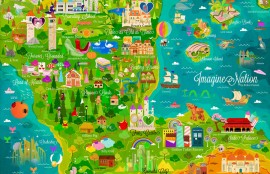




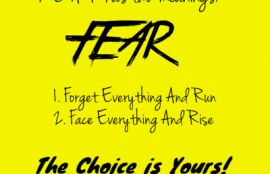

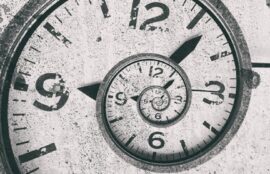





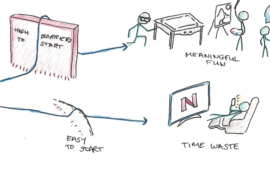
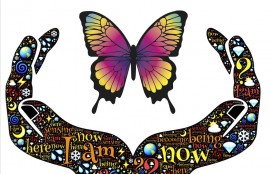


Sorry, the comment form is closed at this time.